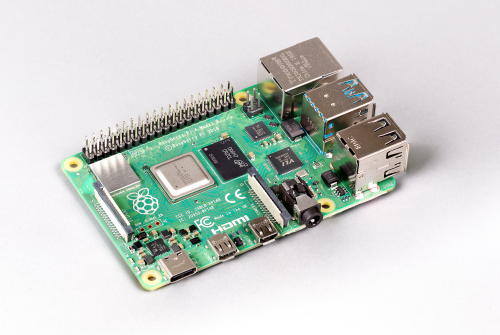In this video, we take a look at the all-new Raspberry Pi 4 8GB version and try to decide if it’s worth the upgrade or not.
We also test it out with the new 64bit version of Raspberry Pi OS “previously known as Raspbian” and try to see if we can use all 8GB’s of Ram!
Technology
RaspberryPi Zero W Surveillance Camera
Wireless surveillance camera created using motionEyeOS, a Raspberry Pi Zero W, and a Zero Cam camera – all powered via a USB power bank!
Fossil Data Part 2: 8-Inch IBM Floppy Data Recovery
We help intrepid paleontologists to retrieve precious fossil data fossilized on 8-inch IBM floppies.
DNS Over TLS On pfSense 2.4.5
How to setup DNS over TLS on pfSense 2.4.5
Raspberry Pi Cluster Ep 2 – Setting up the Cluster
In this video, I show how to build the hardware for a Raspberry Pi Cluster, and how to flash microSD cards or the eMMC storage built into a Raspberry Pi Compute Module.
I compare the experience of building the hardware for a traditional Raspberry Pi model B cluster versus building a Turing Pi cluster with Compute Modules.
I also explore why it takes a little extra work to flash a Compute Module’s eMMC storage, but why it’s worth doing it.
8GB RaspberryPi 4 on sale now at $75
Raspberry Pi 4 is almost a year old, and it’s been a busy year. We’ve sold nearly 3 million units, shipped a couple of minor board revisions, and reduced the price of the 2GB variant from $45 to $35. On the software side, we’ve done enormous amounts of work to reduce the idle and loaded power consumption of the device, passed OpenGL ES 3.1 conformance, started work on a Vulkan driver, and shipped PXE network boot mode and a prototype of USB mass storage boot mode – all this alongside the usual round of bug fixes, feature additions, and kernel version bumps.
While we launched with 1GB, 2GB and 4GB variants, even at that point we had our eye on the possibility of an 8GB Raspberry Pi 4. We were so enthusiastic about the idea that the non-existent product made its way into both the Beginner’s Guide and the compliance leaflet.

Samsung Galaxy Z Flip Durability Test – Fake Folding Glass?!
Today we find out how durable Samsungs new Galaxy Z Fold really is. Grab your Robot Camo dbrand skin HERE: http://dbrand.com/robotcamo Samsung has pitched this phone as a folding glass phone that ‘bends the laws of physics’ But… is folding glass actually possible? The only way to find out is with a scratch test. Overall I’m impressed with the Galaxy Z Flip. If they change the name of their screen material to something besides glass I would give it a 10/10 as far as folding phones go. The only physical characteristic this screen material shares with actual glass is the clarity. And I dont think thats fair to consumers. At all. Let me know what you think in the comments.
Rain Gutter POWER #2 – 3D Printed Alternator vs. DC Generator for More POWER From the Rain!
This is Part 2 of my series on generating power from my rain gutters. This was a huge effort but I’m happy to say it paid off. Please like and subscribe.
Introducing the Arduino Portenta H7
Designed for demanding industrial applications, AI edge processing, and robotics, the Arduino Portenta family is a new standard for open high-density interconnect to support advanced peripherals.
The first member of the family is the Portenta H7 module – a dual-core Arm Cortex-M7 and Cortex-M4 operating at 480MHz and 240MHz, respectively, with an operational temperature range of -40 to 85°C. The Portenta H7 is capable of running Arduino code, Python, and JavaScript, making it accessible to an even broader audience of developers.
STM32 Blue Pill vs Black Pill Microcontroller Boards
The “Blue Pill” is a cheap STM32 Cortex-M3 based microcontroller board. It is popular because of its price and versatility. Now there is an updated variant, dubbed the “Black Pill” with a new STM32 microcontroller based on the Cortex-M4F (with a FPU).
The Blue Pill uses the STMicro STM32F103C8T6 and costs less than $2. The new “Black Pill” is shipping in two variants, one using the STM32F401CCU6, the other using STM32F411CEU6. Both are Arm Cortex-M4F based microcontrollers.
